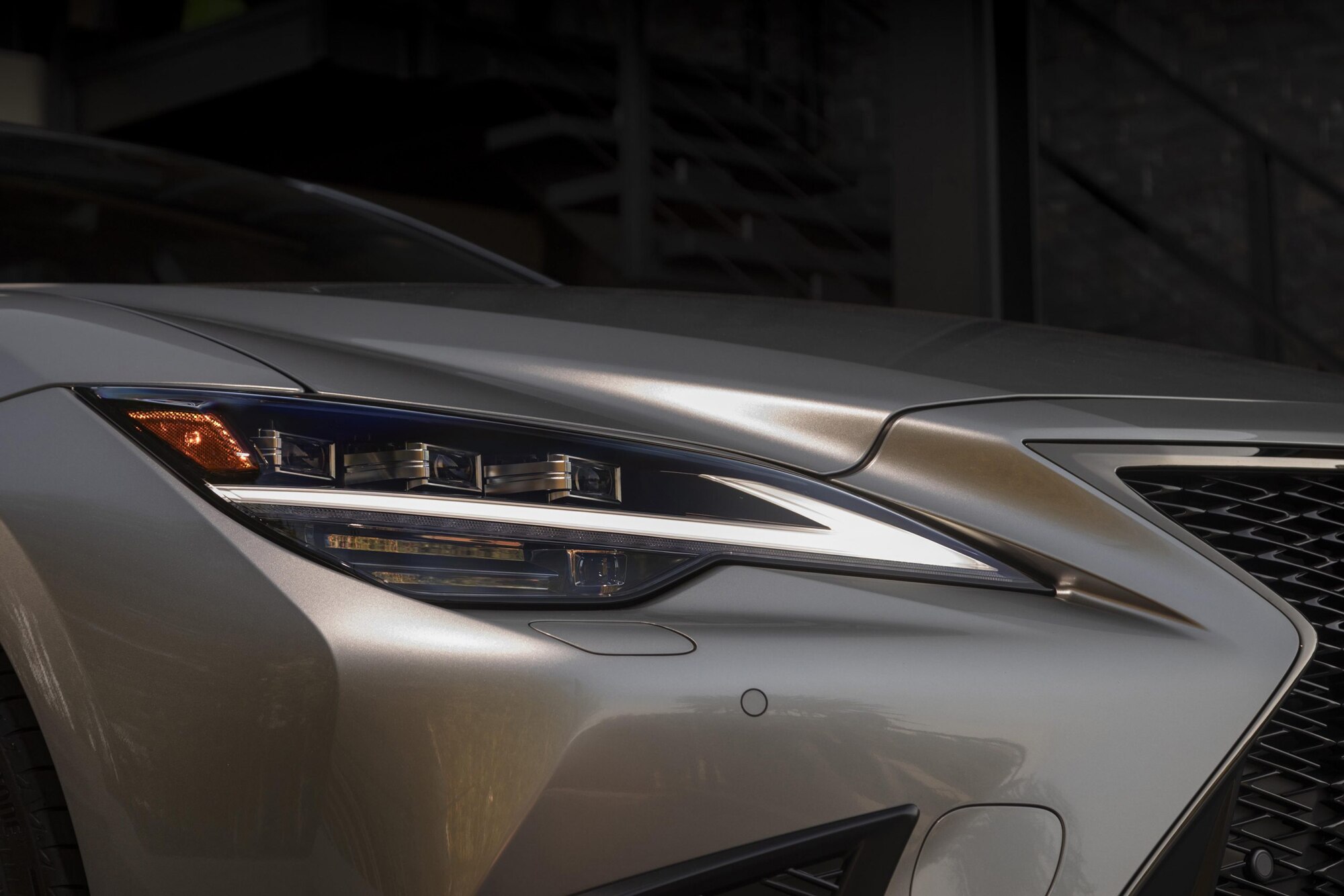What Is Lidar?
This new sensor has the potential to expand vehicles’ hands-free driving capabilities beyond the highway.
 Lexus
Lexus
How Does Lidar Work?
Lidar is short for “light detection and ranging.” The sensor sends out many small pulses of light, usually emitted by an eye-safe laser, that bounce off of objects and return to the sensor. The length of time a pulse takes to make the trip from the sensor to an object and back tells the sensor how far away the object is. A computer assembles all the returns and creates a type of 3D topographical map of the environment known as a point cloud. The vehicle then uses that information to make decisions about which path to travel or how to behave. All of this happens multiple times a second.An automotive lidar sensor comes in one of two main forms: it’s either a box with a lens on one side which provides a limited field of view, or it’s a puck shape with spinning internals that emit light in every direction. You may have noticed the latter sticking out from the roofs of many autonomous test cars; the former are less noticeable, often incorporated into the bodywork on the front, rear, or sides of such vehicles.
What Is Lidar Used For?
In the automotive industry, lidar can help a vehicle know precisely where it is — a process called localization — and detect objects around itself. A vehicle can pinpoint its position on the road within a few inches by comparing live lidar data with existing 3D lidar maps. (Vehicles without a lidar sensor can also use high-definition maps to glean information about their surroundings, as GM Super Cruise-equipped products do to enable hands-free driving in certain situations.)How Does Lidar Compare with Radar, Sonar, and Cameras?
While lidar doesn’t require daylight to function, poor weather conditions diminish the sensor’s ability to see. Radar, which uses radio waves instead of light to detect objects, works well in instances where a high-resolution image isn’t necessary. It can determine relative speed between vehicles, which is why automakers use it in adaptive cruise-control systems. Sonar (or ultrasonic) sensors send out sound waves to detect objects and function at close range, making them well suited to parking-assist duty. Cameras do some things the others can’t, such as see color and read road signs or lane markings, but lighting and weather conditions can blind or otherwise adversely affect them.Lidar provides a detailed view of the environment, but automakers can’t achieve vehicle automation with lidar alone. Putting together data from multiple sensors, an approach called sensor fusion, allows a vehicle to take advantage of each type’s strengths and can also provide an extra layer of safety should a sensor fail. Autonomous vehicle companies like Cruise, Waymo, and Motional use sensor fusion with lidar, and many automakers are working on adding it to their sensor suites to enable new advanced driver-assistance capabilities. A notable exception to this trend is Tesla, whose CEO, Elon Musk, publicly stated that lidar is not necessary for full autonomy. Tesla even went as far as omitting radar sensors on new Model 3s and Ys, leaving them to rely on cameras alone.
Can I Buy a Car With Lidar?
Audi installs lidar sensors in select vehicles, and some Infinitis use laser rather than radar for adaptive cruise control. When it goes on sale sometime this year, the 2022 Lexus LS500h AWD sedan will use lidar as part of its Teammate suite of advanced driver-assist technology. GM’s upcoming Ultra Cruise system, set to debut on 2023 Cadillac models, will use lidar’s improved localization to expand hands-free driving operation to all types of roads, not just highways like with the current Super Cruise system. And Volvo intends to reveal an electric vehicle in 2022 that will leverage lidar for driver-assist features and eventually enable autonomous operation.
Written by humans.
Edited by humans.
 David Gluckman
David GluckmanDavid Gluckman has over a decade of experience as a writer and editor for print and digital automotive publications. He can parallel park a school bus, has a spreadsheet listing every vehicle he’s ever tested, and once drove a Lincoln Town Car 63 mph in reverse. When David’s not searching for the perfect used car, you can find him sampling the latest gimmicky foodstuffs that America has to offer.
Related articles
View more related articles